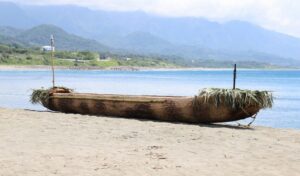Talk to any archaeologist, and one of the first things they’ll tell you is that the discipline has very little to do with bullwhips, leather jackets, or punching Nazis. But a team of scientists digging in Jordan has discovered one notable exception to the “real archaeology is not like an Indiana Jones movie” rule. They have unearthed an exceptional find buried beneath one of the film locations for Indiana Jones and the Last Crusade.
The scientists uncovered 12 human bodies entombed beneath a building known as The Treasury in the ancient city of Petra, Jordan. The 2,000-year-old remains date to sometime between the first century BC and the first century AD. The site also contained numerous artifacts.
If you’ve never heard of Petra, you’ll probably still recognize it — the UNESCO World Heritage Site is half-built, half-carved out of the rose-colored sandstone cliffs located halfway between the Red Sea and the Dead Sea.

Look familiar? Photo: Shutterstock
The Treasury, in particular, is iconic. It has graced the cover of National Geographic and was featured as the location of the Holy Grail in the third Indiana Jones movie. Today, it is a popular tourist attraction.
Suspicions confirmed
A few years ago, archaeologists discovered two tombs in The Treasury and suspected there might be more.
However, the funding and permits needed for investigations have been difficult to come by lately. So when a rare opportunity presented itself, a team led by Pearce Paul Creasman of the American Center of Research conducted ground-penetrating radar scans.
“That’s when we discovered the signals which I interpreted as voids in the subsurface,” Richard Bates, a professor of geophysics at the University of St. Andrews, told NPR.
The government of Jordan gave the go-ahead to begin digging. This past August, the team uncovered the 12 sets of remains in a chamber 5.5m long, 5.5m wide, and 3m deep. A film crew from the Discovery Channel was on hand when the bodies were discovered. An episode of Expedition Unknown aired on Wednesday, October 9, and chronicled the find. That’s serendipitous because, astonishingly, the remains were unmolested by human hands — the bodies resting just as they were when originally entombed.

One of the sets of human remains found in the tomb beneath The Treasury. Photo: Expedition Unknown/Discovery Channel
Petra was built by the Nabataeans. These desert nomads ruled a thriving kingdom in the area for 500 years until the Romans annexed it in 106 AD.
An improbable discovery
Creasman told CNN that it’s extremely rare to find untouched human remains in Petra due to its location as a trading crossroads and travelers’ millennia-old habit of ducking into the sandstone buildings to escape Jordan’s oppressive heat.

A human skull found beneath The Treasury in Petra. Photo: Expedition Unknown/Discovery Channel
“We were hopeful of finding anything that might tell us more about the ancient people and place — human remains can be a really valuable tool in that regard,” Creasman said. “The burials in this tomb are articulated, so the bones haven’t been rummaged around and moved. That’s exceedingly rare.”
Intriguing artifact
The artifacts found with the remains are in even better condition. One of them, a ceramic cup, looks startlingly like the Holy Grail prop used in Indiana Jones and the Last Crusade. While the human remains are blessedly free of interference by human hands, several sets show signs of mold, likely owing to the porous sandstone Petra is carved from.

Indy fans might find this artifact eerily familiar. Photo: Discovery’s Expedition Unknown
That means the team must proceed cautiously with the rest of the dig. As usual with archaeology, funding is an issue.
“The next step…is to get the money to properly exhume at least one of the bodies and do a full study on it,” Bates said. “There are indications from the geophysics that there are other tombs there…A lot of where we go from here is going to be quite expensive, basically. So who knows when that’s going to happen?”






